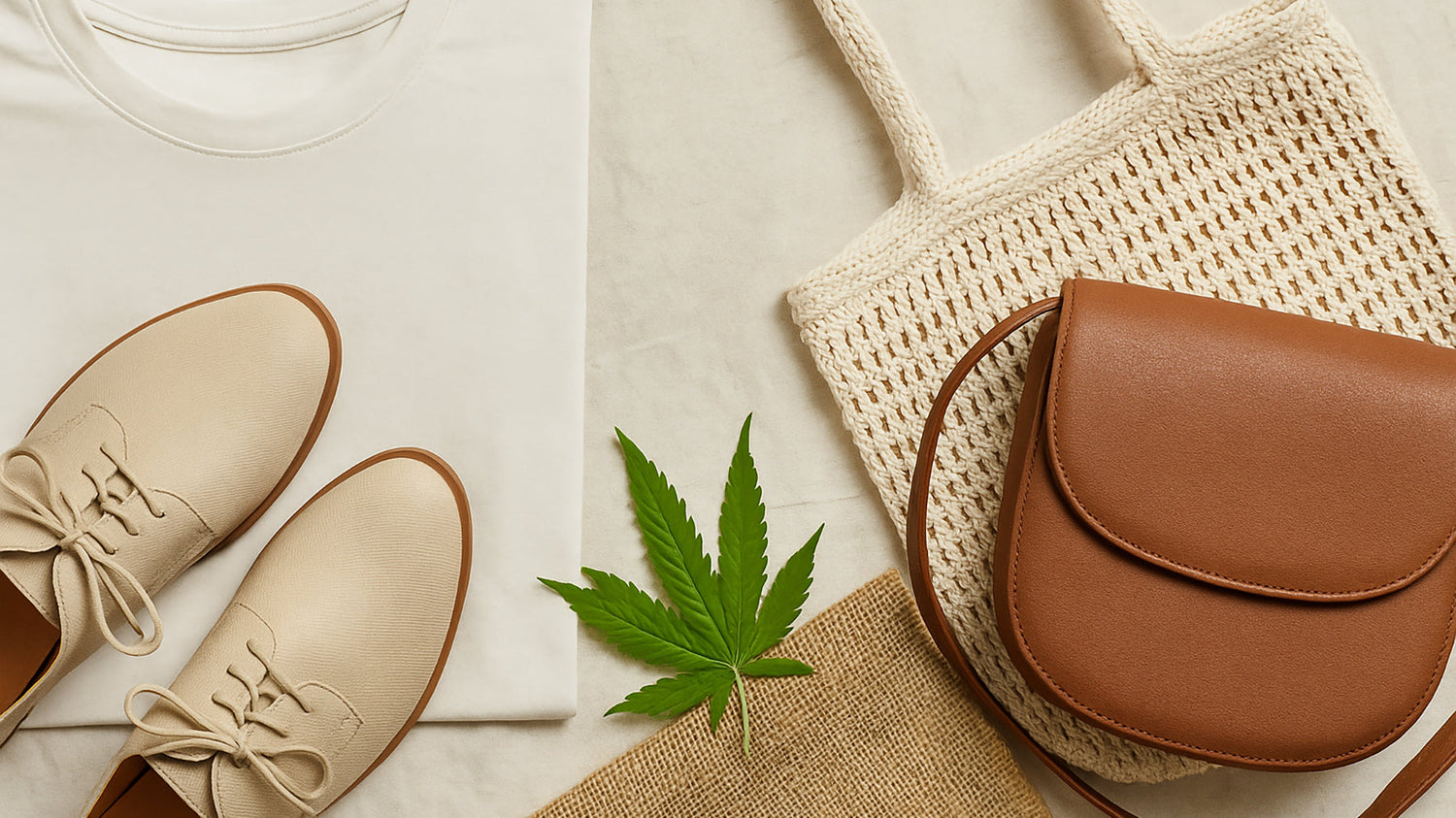The fashion industry is embracing a wide array of innovative, cruelty-free, plant-based materials. Here's a deep dive into ten top-tier sustainable fabrics - highlighting their origin, benefits, and limitations.
1. Organic Cotton
-
Eco credentials: GOTS-certified and grown without pesticides or GMOs, it consumes significantly less water than conventional cotton and prioritizes soil health.
-
Ethical production: Typically certified through Fairtrade or similar standards, ensuring fair wages and safe working conditions.
-
Performance: Soft, breathable, and long-lasting - ideal for everyday and all-season garments.
2. Hemp
-
Environmental benefits: Thrives with minimal water, requires no pesticides, and replenishes soil through deep roots.
-
Durability: Strong, tear-resistant, age-resistant; perfect for long-lasting clothing and accessories.
-
Versatility: Suitable for shoes, shirts, pants, bags, and jacket linings; often blended for enhanced texture.
3. Olive Leather (e.g., Oleatex)
-
Waste-to-value: Converts olive mill pomace (seeds/peels) into a leather-like material—up to 70% plant-based; reducing agro-waste and CO₂ emissions .
-
Low-chemical process: Uses water-based dyes and avoids carcinogenic substances; certified for compostability/vegan quality .
-
Performance: Durable, water-resistant, and aesthetically versatile - textured like saffiano leather.
4. Apple Leather (e.g., AppleSkin, Frumat)
-
Upcycling innovation: Made from by-products of the apple juice/food industry, minimizing fruit waste .
-
Material qualities: Breathable, flexible, durable, and visually similar to traditional leather.
-
Limitations: Requires resin/PU coating to increase durability; maintenance like proper cleaning is key.
5. Piñatex (Pineapple Leaf Leather)
-
Circular design: Produced from surplus pineapple leaves - no extra land use; biomass residue becomes fertilizer .
-
Structure: Composed of 80% pineapple fibers and 20% PLA resin, then coated with petroleum-based resin .
-
Pros & cons: Breathable, lightweight, pliable; approx. 80% biodegradable (substrate only) . Needs care to maintain longevity.
6. Cactus Leather (Desserto)
-
Regenerative growth: Harvested from prickly-pear cactus pads without harming plant - cacti absorb moisture from air, using just ~200 L water/kg biomass .
-
Eco-credentials: Over 90% organic carbon, minimal pesticides, and positive water & carbon footprint .
-
Performance: Soft, durable, water-resistant.
7. Mushroom Leather (Mycelium)
-
Biotech marvel: Grown in controlled settings on agricultural waste; fully biodegradable and customizable .
-
Types & texture: Includes Mylo by Bolt Threads and MycoWorks - suede-like Mycelium leather that can be wax-treated for strength.
-
Eco balance: Biodegradable; finishes may include PU coating for enhanced durability.
8. Cork Leather
-
Renewable cork oak: Bark harvested without tree damage; trees live centuries and bark regrows.
-
Zero toxins: Production involves no harmful chemicals; harvested bark is boiled and processed into sheets .
-
Pros & cons: Light, water-resistant, unique texture; less flexible and long-lasting than leather alternatives.
9. Bananatex (Abacá Banana Fiber)
-
Agroforestry sustainable: Abacá grown in mixed orchards, no irrigation or pesticides needed; improves soil fertility .
-
Durable canvas: Strong and biodegradable; sometimes beeswax-coated for waterproofness.
-
Use cases: Ideal for bags, backpacks, and eco-textile furniture.
10. Other Emerging Materials
-
Grape leather (from wine waste), coffee leather, agave, and temple-flower (Fleather) are gaining traction .
-
Bioplastics and biotech fabrics: Nettles, rose pulp fibers, seaweed - all part of regenerative biotextile movement .
What to Look For in Sustainable Vegan Fashion as a Consumer
-
Certifications: GOTS, OEKO‑TEX, PETA-Approved Vegan, FWF, B‑Corp for verified sustainability and ethics.
-
Material composition: Higher plant-based ratio and minimal plastic resin improve recyclability/biodegradability.
-
Processing transparency: Compostable or closed-loop production indicates true environmental care.
-
Care instructions: Resin-coated leathers need specific cleaning; natural fabrics benefit from gentle washing.
-
End-of-life planning: Brands offering take-back, upcycling, or composting solutions reduce waste.
Conclusion
The landscape of vegan materials today boasts powerful alternatives - from organic hemp and cotton to cutting-edge leathers like olive, apple, cactus, mushroom, Piñatex, cork, and Bananatex. Each offers a distinct blend of eco-efficiency, functionality, and aesthetic, aimed at reducing reliance on animal and petroleum-based products.
The ideal eco-material isn’t one-size-fits-all—it depends on product use, durability needs, and end-of-life goals. But with careful research and transparent information, consumers can confidently choose materials that align with both planetary wellbeing and cruelty-free values.
At NEW WORLD GUARDIANS, we are proud to support and promote fashion innovations that uphold these values. Our mission is to educate, inspire, and empower conscious living through transparency, ethics, and sustainability.


